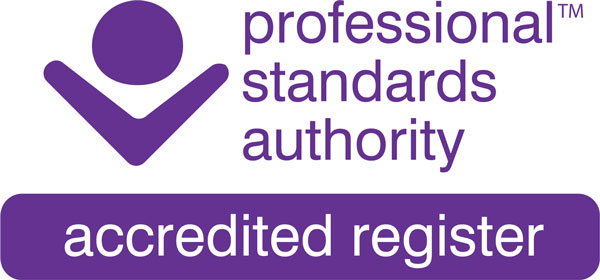Treatment for dealing with PTSD, trauma and phobias
There are two kinds of bad memories. Some fade slowly, so that a year or so later the memory of the car crash, or whatever it was, is no longer intrusive, and in time it goes away only to be recalled as an ordinary narrative memory about some unfortunate incident you once experienced.
Traumatic memories do not fade in the same way, and as time goes by they may become worse. These memories are usually connected with a life threatening or other serious event and are more deeply embedded in the brain as a ‘survival template’. If they are not treated they may continue to fire off strong emotional reactions at inappropriate moments and thereby cause trouble for the rest of the sufferer’s life.
What is post-traumatic stress disorder (PTSD)?
Trauma, as a medical term, refers to any injury or wound violently inflicted on the body. Post-traumatic stress disorder (PTSD) is a debilitating condition that often follows a terrifying physical, life threatening, or perceived as life-threatening, event. It causes the person who survived it to have persistent, frightening thoughts and memories, or flashbacks, of the ordeal.
People with PTSD often feel chronically, emotionally numb. About 25 per cent of people involved in major traumatising events go on to develop long-term PTSD symptoms, once referred to as ‘shell shock’ or ‘battle fatigue’. This percentage rises if traumatising incidents are repeatedly experienced, as in frontline battle in war zones or during a career in the emergency services.
What kinds of event can cause it?
Any event that triggers a strong fear response can lead to PTSD, including: violent attacks; rape, sustained verbally aggressive attacks; sudden illness, such as a heart attack; traffic accidents; industrial injuries; witnessing sudden violent death, such as in train crashes, bombings and war-zone incidents; panic attacks in which a person truly thinks they are dying. Children have even developed PTSD symptoms from watching horror films on TV, and people can become vicariously traumatised from being exposed in some way to frightening or horrific things that have happened to others.
What is a phobia?
A phobia is an uncontrolled, persistent, irrational fear that is accompanied by a compelling desire to avoid the object, activity, or situation which provokes the fear. In brain terms, a phobia is no different from PTSD. The same neuronal pathways are involved.
What are the symptoms of PTSD?
Traumatic memories may cause any or all of the following problems:
- panic attacks
- intrusive memories
- nightmares
- sudden irrational anger outbursts
- depression and other unpleasant emotional states
- intense flashbacks where you actually hallucinate going through the terrible event again as if it were in the present…
One traumatised war veteran described it as “a constant, silent churning” in the back of his mind.
Why are PTSD memories different from the others?
In people suffering PTSD symptoms, the pattern of the memory is believed to be trapped in a part of the brain called the amygdala, which is responsible for ensuring our survival by triggering a ‘flight or flight’ response when something dangerous occurs. When something in the environment or in the sufferer’s thinking matches the memory in the amygdala, it sets off the alarm bells just as if the original incident were happening again. Simultaneously, other memories from the time may be recalled very powerfully, bringing back the sights, smells, sounds and emotions from the original incident. The amygdala has no sense of time, and does not know that the incident is in the past.
Is this a major problem?
Trauma is a problem encountered by most GPs, psychologists and psychiatrists, all over the world. The continuing blizzard of news stories about the difficulty of living with PTSD shows how little effect most currently popular treatments have.
What is the human givens approach to treating trauma and phobias?
The amygdala has to learn that it is possible to visualise/recall the incident without panicking, and a highly reliable, non-invasive way to do this is through the psychological method known as the ‘rewind’ technique. The version of the technique used by human givens practitioners is a refinement of one taught on NLP courses for many years. The name rewind was coined by Dr David Muss for the version he developed. The refined rewind technique practised by human givens practitioners is a guided imagery technique, which allows the brain to revisit the traumatic events in a dissociated way while a person is in a physically calm state, enabling the memory patterns to be reinterpreted as no longer threatening.
The human givens version of the technique was refined to be closely in line with the way the brain works. It is the HGI preferred method of treatment because, when properly delivered, it reliably relieves the nightmares, panic attacks, flashbacks and intrusive memories without undue distress.
Extensive clinical experience shows it to be a highly cost-effective and successful treatment. Trauma-focused cognitive behavioural therapy (CBT) and Eye Movement Desensitisation Reprocessing (EMDR) treatments recommended in the National Institute for Health and Care Excellence (NICE) guidelines may take many sessions and are often only partially successful.
Treatment is safe and non-voyeuristic. It often especially suits victims of sexual assault, beatings or any kind of humiliation, as the victim does not have to give the therapist details of what happened.
How long does it take?
Treatment is fast. In our experience of thousands of cases, people with a single-incident trauma can almost invariably be detraumatised in one session, with one follow-up to check that all is well. In more complicated cases, the trauma can still normally be resolved in one session, but there is often more work to do to help the client get back to normal life – for instance, building confidence or lifting them out of depression or anger created by the suffering. The aim always is to keep the therapy brief, so as to give volition back to the client as soon as possible.
In cases of complex trauma, where there is a long history of multiple traumas and associated difficulties, or where someone is being supported through a continuing traumatic situation, more therapeutic work may well be needed – each case is different. But the aim will be the same: to reduce suffering and help the person regain control of their life as soon as possible.
Find a therapist
If you think you would benefit from seeing a counsellor or therapist trained in this approach, click here to find your nearest one.
Learn more…
Human Givens College run the following related courses:
- The Rewind Technique – effective treatment for trauma (PTSD) and phobias (2-day in-person workshop)
- Understanding Trauma – Effective treatment and recovery (online course)
- Trauma: Patterns of the past – Essential trauma awareness training on the causes, symptoms and best ways to treat PTSD (Live online workshop)
- Moral Injury – and its relationship to trauma and mental health
- Complex Trauma: working with challenging cases – (Live online workshop)
- Stress and Mental Health – what you need to know (On-demand webinar)




